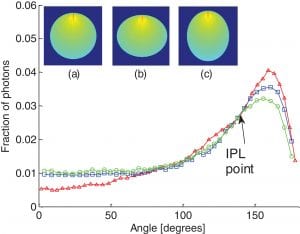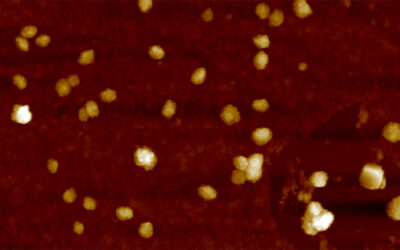Optical assessment of human tissue is one of the most interesting, but complex challenges. When measuring a tissue, both the absorption and scattering are unknown. Most clinical optical measurements extract a physiological parameter from the absorption, such as blood saturation, perfusion or pressure, while ignoring or estimating the scattering. This adds an inaccuracy to the physiological parameter been assessed.
A research team from the Institute of Nanotechnology and Advanced Materials in Israel examined the full scattering profile (FSP), which is the angular distribution of exiting photons. They found a point – the iso‐path length point (IPL point) – which is not dependent on the tissue scattering, and can serve for self‐calibration.

Comparison of FSP and IPL point in different tissue geometries.
In earlier research on measuring the angular intensity distribution of cylindrical tissues they discovered the IPL point, which is an angle whose value does not dependent on the scattering tissue properties. Rather, the position of the IPL point is geometric dependent, hence in cylindrical tissues depends solely on the diameter. Since the target tissues for clinically physiological measurements, such as earlobe, fingertip, lip and pinched tissue, are not a perfect cylinder, the team examined as well how the change in the tissue cross section geometry influences the FSP and the IPL point.
“This finding is very useful, since the IPL point can be discovered without finding the exact sizes or changing the wavelength in order to change the optical properties, but by simply changing the position of the input illumination to the perpendicular orientation” according to team member Dror Fixler. This work takes us one step closer to extracting a more exact clinically physiological measurement of tissues, such as earlobe, fingertip, lip and pinched tissue.

















